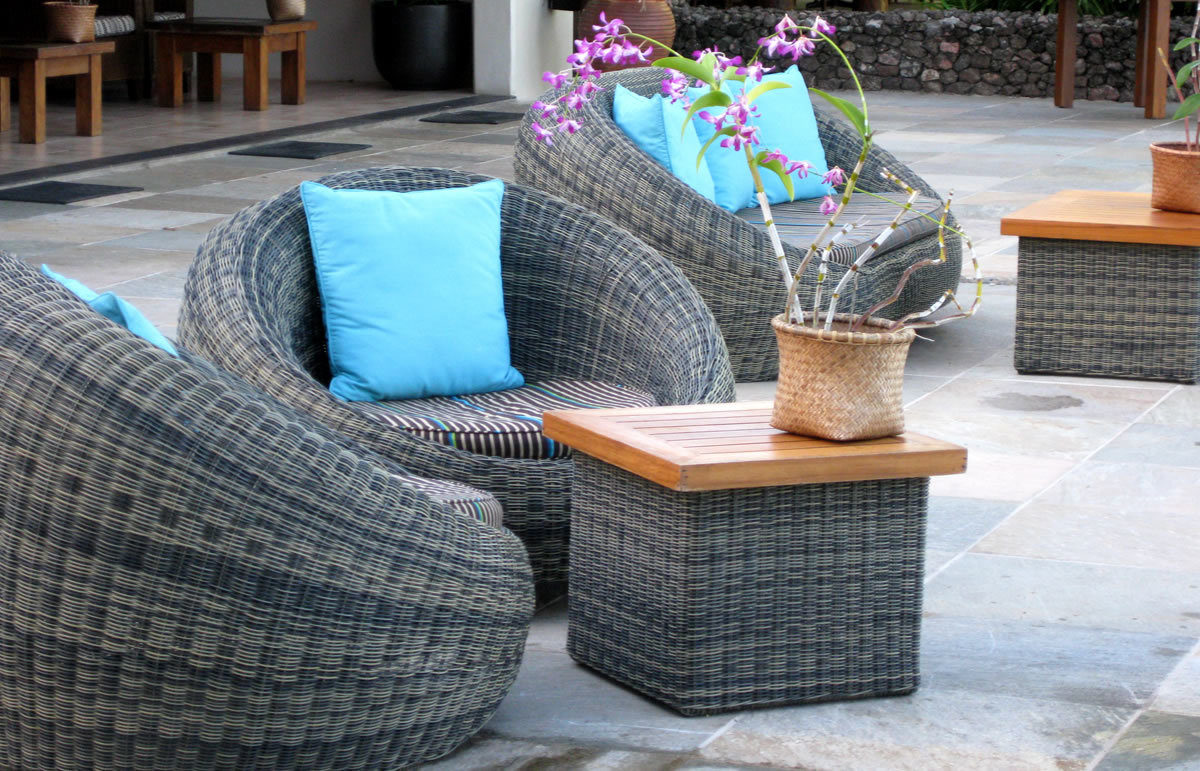The summer is winding down which means that our days spent outside barbecuing and lounging by the pool are quickly coming to an end. While it may feel like you just brought your patio furniture out of storage, it will soon be time to return it to its hibernation spot. In order to extend the life of your outdoor furniture, it is important to properly clean it before you put it away for the winter months. Here are some tips for keeping your patio furniture looking clean and new for years to come.
Cleaning Outdoor Furniture 101
Taking care of your outdoor furniture should not require too much work. You probably have everything you need to clean your furniture underneath your kitchen sink.
Start by vacuuming any loose debris off of the furniture. Once you have gotten rid of the easy to remove dirt, it’s time to use some elbow grease. Different cleaning solutions work better on certain types of materials than others. When cleaning wicker furniture, use a soft scrub brush dipped in a solution of warm water and Murphy’s Oil Soap. Rinse off the mixture with a hose and towel dry. Use the same solution for teak furniture.
Aluminum furniture is best cleaned with a warm water/dishwashing detergent mixture. Soft Scrub can be used on any scuff marks. Avoid using abrasive cleaners, as they will scratch the metal. Hose down the furniture to rinse clean. Once dry, treat metal furniture with automotive wax to give it a protective coating. Clean wrought iron and plastic furniture the same way. WD-40 can also be used to remove stubborn stains from plastic furniture.
To clean your resin furniture, make a mixture of one gallon warm water and ½ cup baking soda. Scrub with a soft sponge and hose clean. A solution of one gallon warm water and ½ cup bleach can be used to clean plastic mesh furniture. Avoid using bleach on any colored fabrics.
Storing Your Patio Furniture
If you want your outdoor furniture to last a long time, it must be kept out of the harsh winter elements. Ideally, your furniture should be stored in a garage or shed. If neither of these options is possible, consider securing a tarp around all pieces. Remove all cushions and store them in a waterproof bin or place in a large plastic bag, away from water, insects and rodents. Umbrellas should be completely dried and fastened, covered and stored inside. Tables with tile tops must be brought into a temperature controlled environment to avoid cracking the tiles.
If your storage space is limited, vinyl furniture covers work well to shield your patio furniture from ice and snow. These covers come in a wide range of thicknesses, shapes and sizes to accommodate all of your furniture needs. You can find these protective covers at your local hardware store.
The newest trend in outdoor furniture winterization is shrink-wrapping. Once used mainly to protect boats during the winter months, this method has expanded to include backyard furniture as well. Heat shrink wrap is made of a polymer plastic that, when heated, constricts tightly around the items it is covering. This waterproof material keeps furniture free from snow, ice and rain. In the spring, the wrapping is easily removed by carefully cutting through the plastic.
By following these guidelines, you can preserve the life of your outdoor furniture. These steps also make spring cleaning and set-up a breeze. The colder months may be on their way, but your patio furniture will be safely stored and ready to make an appearance again when spring arrives.


